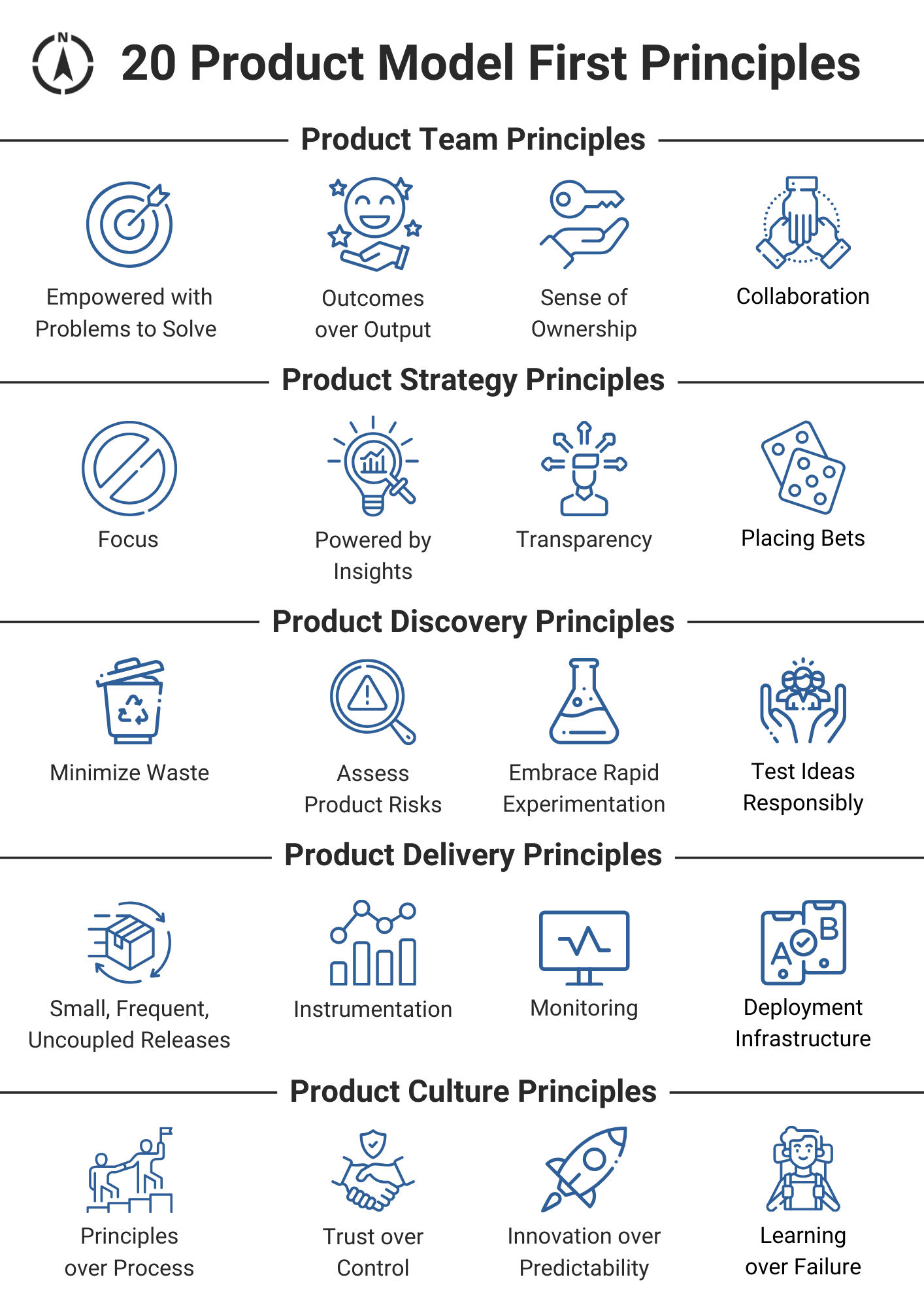The one with Charisma and "the Gap"
-
Recently and currently I have been actively working on defining telemetry for observability of the things I do from a testing practice leadership standpoint (and questioning leadership practices, and alignment in general). In parallel (or more accurately - in the evenings), I am listening to the audiobook “Transformed” by Marty Cagan which adds an extra layer of challenge on top of my thoughts. Therefore, the resources I am sharing in this post will be somehow related to my recent thoughts on leadership, (SMART?) goals (outcomes vs outputs), charisma, “the Gap” and so on.
20 product model first principles shared by the best product companies as outlined in a book “Transformed” by Marty Cagan. Source: Product Compass:

-
To encourage more live interactions and face-to-face discussions in our company’s testing community, this year we kicked off a new format of short meetings composed of 10-15-minute presentations or video recordings followed by a 15-20-minute discussion about the topic. So far, the first several sessions have been pretty successful, so I can proudly recommend trying it out in your community as well. Moreover, I have found a few quality talks while exploring videos recommended by our community. One of them - “Let’s face it: charisma matters” by John Antonakis. In this talk, John compares good news presented with standard speech versus bad news presented with charisma speech and explores how both situations impact employees’ performance (measured by outputs). And, the conclusion from that is - that charismatic speech can really help to minimize the potential damage of presenting bad news.
- Another article that resonated with the topic was “Is Your Boss a Horrible Person? Plus: The Key to Standing Out at Work” from A Spark of Optimism newsletter. Even though I strongly recommend you read the full article to get the full context, there are several thoughts I would like to highlight:
-
“We very often confuse someone’s skillset with their character.”
While the mentioned article gives an example of horrible person who may be a good specialist (judging by outcomes, setting emotional judgment aside), that is not as bad as a charismatic yet underperforming leader (once again - judging by outcomes). Could it be the case that sometimes we as spectators have unreasonable expectations for our leader’s charisma and other personality traits, and care too little about their performance (outcomes)? Or could it be the case their performance is treated as given or not accessible to us (due to poor observability or its sensitive nature), so we judge and critique what is available and visible - the personality? -
“Your ability to get promoted is based on your ability to solve problems in the gap.”
Totally agree. Many times your job description will not tell you how to get promoted. Career ladders (or lattices?) can be helpful, but even such tools get more abstract and uncertain when shifting to more senior levels. So, the higher the role, the higher the possibility that one will need to find “the gap” themselves. Also, impact expectations can differ as well. While Senior Test Engineers can be expected to fill some “gap” within their current project/product by establishing some company-wide well-known testing practice, higher roles like Staff/Principal Test Engineer can be expected to (recognize and) fill some “gap” within the overall company’s testing practice. In other words, higher roles can be expected to establish something new (that has not existed before) within the company driving its testing practice forward, and innovating. All in all, I feel like behavioral expectations for roles (junior, mid, senior, staff/principal) map pretty well with typical maturity level definitions (initial, growing, competent, innovating). Roughly, but well.
-
-
Promotions, performance management, defining and setting goals, and making them SMART (Specific, Measurable, Achievable, Relevant, and Time-Bound) was another hot topic around me lately as we are migrating to a new performance management system as part of the integration process within our company. And, as there was some struggle, those several pieces of advice, hints, and examples rapidly gained some measurable popularity. And that is no surprise - for goals to be meaningful they should target for wider impact (outcomes over output, remember?) and align with strategic priorities/direction defined by leadership. Apparently, it can be difficult to improve something, it can be very hard to display the improvement, and it can be nearly impossible to make others spot improvement opportunities without measuring what to improve. Without telemetry and observability around the outcomes that matter. On opposite, if leadership makes sure to provide proper telemetry and observability, and furthermore, if people can use them within their scope of interest (filter by department, team, project, practice, function, etc.), they are more likely to come up with more meaningful goals tied to outcomes not outputs, and most likely aligning and contributing to wider goals within a company.
Hopefully, that closes the loop (of this post and) explains me and my latest efforts a bit as I spent a little too much time drafting, defining, discussing, and advocating that. And, not to leave this point that empty, here is a nice article on the topic - “Redefining Observability” by Hazel Weakly.